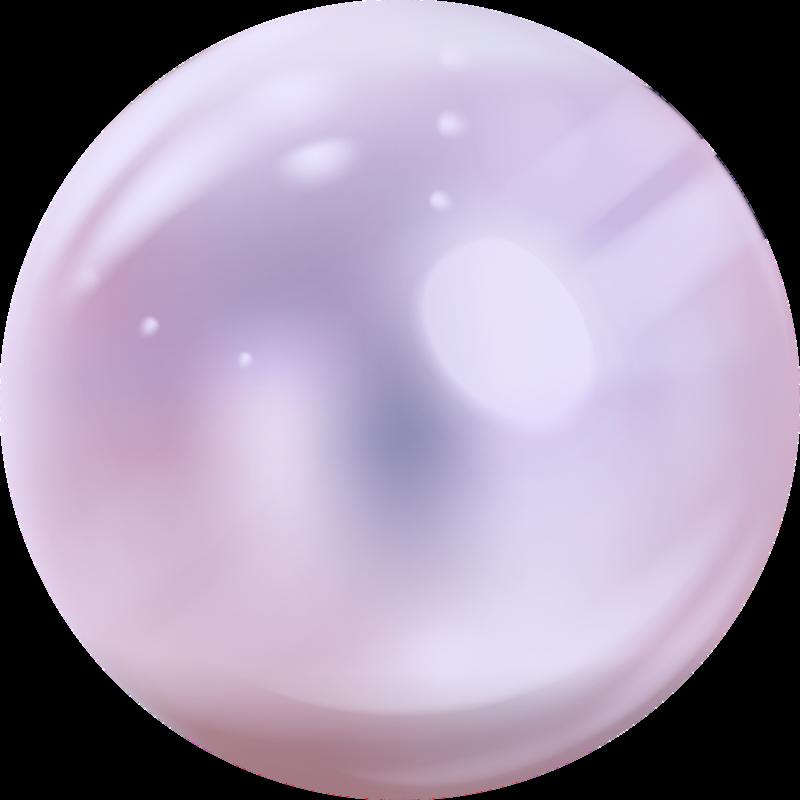Recital'23













Two weeks at the Australian Ballet School
How and why did you decide to attend the Australian Ballet School Summer Program?

Radha - Ballet has always been a passion of mine and I’ve been looking to be a professional In order to do that I wanted to have varied experiences with different teachers and methods, and of course the Australian Ballet School has this really great summer school

Jazzie - I chose to go because I was looking into musical theatre and ballet school and I wanted to see if I liked that environment I heard about this when we went to the UK and visited Nana Oto (a former student at TLFCB) I was talking about how I wanted to get involved in the dance world and she mentioned this summer school she had attended at the ABS and suggested that I try it too When we came back, Miss Yana spoke about it to Radha and we decided to go together
What did you expect?
Radha & Jazzie - This was our first time entering a professional environment and we expected a lot of high class dancers and a high level of teaching. We just expected to gain a wide range of new ballet and dance experiences for which, as yet, there is no scope in India

What kind of people were your fellow students - did you face any cultural differences?
Radha - Everyone there was really nice and it was really interesting to meet people who were so involved in the dance world The majority of the people were from Australia or New Zealand, with a few from Japan as well I think the biggest thing is just their access to the ballet world You know, ballet in India is very limited In Australia they have such wide access, like exposure to a lot of ballet to watch live, different brands of ballet shoes coming to Australia, and so on Of course, they have the ability to dance full-time, too - not doing normal school but dancing Those kinds of things aren't accessible to dancers in India as yet I think that's the biggest difference
Jazzie - Yeah That is the biggest difference And they're all really nice people and it was great to learn from all of their experiences They've been to a lot of major ballet companies/schools for summer schools and competitions
At first we assumed that they were going to be really over intense or Radha - There dance world B mean girl who our studio in B stories from atmosphere ca bit worried ab where we mig know what to ABS Once we


na a Radha Nambisan Jazmine Bhanushali
Radha - I learnt a Swan Lake Act 3 Variation, Bluebird from Sleeping Beauty and Raymonda pizzicato variation.


Jazzie - And I learnt Swan Lake Act 3 Variation, Bluebird from Sleeping Beauty and a Le Corsaire variation.

What was each class you attended like?
ballet technique

Radha & Jazzie - This was something we were very familiar with, it’s what our usual classes look like

Jazzie - Some things were different, though. We did every single section in the syllabus in every class. Usually we would do either frappés or rond des jambes. But there it was everything, everyday.


Radha - What stood out to me was that everything was very fast paced The teachers would tell you the combination quickly and you would do it (only one set on each side) and they would immediately move on to the next combination That enabled us to go through the entire syllabus in one class
jazz pointe & variations



Radha & Jazzie - The warmups were super upbeat and fun They were like ballet, but not ballet There was an emphasis on strengthening We would do abs and pushups every day which really prepares you for the rest of the class Then we would do turns We did a lot of turns a la seconde, which was a little bit different because they are often considered a boys’ step
Then across the floor work - that was a challenge because we did a lot of ‘tricks’ or high level jazz steps like axel turns and double back attitude jumps turning
Radha & Jazzie - We would warm up like regular pointe class And then move on to variations It was a unique struggle, because here we go through a regular ballet class on pointe with emphasis on demi-pointe work and relevés We usually learn variations on flat and then convert it onto pointe whereas there we learnt variations directly on pointe. This is only one of the many world class summer/spring programs offered across the globe With a little research you can find one that suits you!
Radha - After learning the steps, we moved on to choreography, which the teacher created herself That was really interesting because we got to experience a whole variety of styles In my mind before, jazz was a category on its own but there I found that there are so many types and styles within jazz
Jazzie - Yeah Both weeks we had different choreographies and the contrast between them was very striking My first week one was very ‘Broadway, Fosse’ style while the second one was more upbeat and quick paced and felt more familiar to me
Radha - For me the first week felt hip-hop-esque and the second week felt more modern
contemporary
Radha & Jazzie - So this was not a dance class as such As the teacher described it - he wasn't teaching us to dance He was teaching us to be dancers So he would guide us every day on a different way to create choreography He did teach us one phrase of his own creation, but everything else we ourselves created through fun exercises
Jazzie - We created a solo where he gave us a set of numbered steps, for example, hop was 1, drag - 2, walk - 3 , leap - 4, roll - 5, etc. All the way up to number 9. And then he told us to create a phrase using our phone number and its corresponding steps!
Radha - We also created a duet where he gave us these coloured sticker circles and we played twister! We stuck the circles on our joints - elbows, knees, wrists, ankles etc. Then he would spin a colour spinner. If the colour was blue then we would touch our blue, say wrist, to our partner's blue ankle, and so on until a phrase was created.
Radha - Also all the teachers were really eccentric
Jazzie - Yeah, that's the word
They would make all these noises when they were teaching like - Pah!
It was entertaining just watching them teach
Radha - There is one thing I would like to add, which is that during ballet technique and pointe variations, we had a live pianist Oh, and during flamenco we had a live guitarist! I think that was a really unique experience
Here of course, ,we have recorded music So it was really interesting to hear how a class functioned in parallel to the music
Jazzie - Yeah, because there was a pianist we didn't have to do the exercise more. The music stopped when the exercise stopped.
The teacher would tell them to play a four count introduction or a two count introduction. It was like the music was customised to what we were doing. That especially came into play during variations class. For example, if there was one section that was maybe too fast, the teacher was like, can you slow it down a bit, or can you speed this up a bit?
They've got it already.
We tried practising the variations we did there from the music on YouTube when we got back and it was very different because the musicians were there in the room they played the music to us.
Radha & Jazzie - We learned the general basics of flamenco and some technique too
Radha - Well, in flamenco I was really out of my element Both Jazzie and I had never done flamenco before and quite honestly, we were really unfamiliar with what flamenco even was So, it was really interesting to get to try something so new
Jazzie - Yes, we basically had no idea what we were doing! But for me, at least, once I got the hang of the style, it was really fun to embody and find this different kind of character that I've never explored before The first week was especially fun, when we did a lot of swishy work with big skirts After that it was flamenco technique which was mainly flamenco porte des bras - left arm twirling up, then right up, then left down, right down, both up, both down, and on and on Which was, if I may be entirely honest, just a teeny bit boring
What was each day like?
Radha & Jazzie - 8:45
Arrival time, 9:15-10:45
Contemporary choreographic workshop, 12:25-1:45
Classical ballet, 11:00-12:15

Pointe/female variations, 2:00-3:00 Spanish/Flamenco, 3:15-4:30
Jazz/Broadway Classes ended at 4:45
flamenco
What about meals? Was lunch provided at the centre, what did you eat?
Radha & Jazzie - Generally they provide food at the ABS canteen but this time they could not Due to covid or the fact that the AB company was using the space as well We are not sure, exactly So we had to take things from the apartment kitchen, mostly we took tofu sandwiches:)
What did you do in the evenings? Did you explore the city?
Radha & Jazzie - In the evenings we mostly just recovered from the day and stretched out our muscles, but we did find time to enjoy the sites Melbourne had to offer We visited parks, markets, and museums, went ice skating, and even got to see Phantom of the Opera We would have loved to be able to spend much more time exploring, though
Overall how was the program different/similar to what you expected?

Radha - I was expecting it to be a lot more intense than it was and the teachers, they took it quite easy The classes, though they were long, weren't particularly tiring
One thing I was afraid of was being far behind the other students, because we don't know what they would be like For all we knew we could be like way, way behind everyone else
Radha & Jazzie - We definitely weren't the best There are obviously so many talented dancers who are doing it full-time and they're, of course, much more advanced than us We have a long way to go to be at their level
But we also weren't the worst
When you returned to India, what aspects of your dancing have grown, been discovered?
Radha - I think the biggest thing for me was just the artistry of it. They focused a lot on the flair. The use of your body, your upper body, the use of your arms. They didn't really focus as much on technique. Miss Yana has a really strong emphasis on technique, which is good for the basics. To build on. As we already had that strong, technical foundation we were able to use our time at ABS to grow from there in different ways.
Jazzie - Yes, though we had a certain amount of technique before we went, there was always that element missing. That ballet school flair and finishing. When we came back, we noticed that we looked more like vocational ballet school dancers
What are your plans for the future now that you have experienced life at a dance school?
Radha - So personally, this was an experiment to see what I really wanted, and I have never had a better experience. It was really one of the happiest times in my life. For the future, I am looking at full-time schools as well as summer programs and spring programs to do in the meantime. We have both been preparing to send our photo auditions to these schools and colleges.
Jazzie - I feel like it was a really eye-opening experience.

I went to see if I wanted to pursue dance in my future, and it was definitely a confirmation of yes, that's exactly what I want t
THE AUSTRALIAN BALLET


Pre-Professional Program (runs both weeks): 14-21 years of age AND studying Advanced (or equivalent) level or higher - Radha and Jazzie attended this You havetheoptionofattendingjustoneweekorboth
Feeforoneweekis(excludingaccommodation)- Rs 36,000
OpenProgramfor8-18years,boyscourseandacourseforyoungerchildrenare alsoavailable All4coursesruneveryJanuary

website
Click for
Sea Witch
Makeup by Elina Wisung
The Sea Witch is a pivotal character in the story, as she seeks to thwart the love between the Sea Princess and her human prince. She is often depicted as a jealous and vengeful figure who will stop at nothing to get what she wants. However, there is also a sense of tragedy to her character, as she is often portrayed as a lonely and misunderstood figure who has been cast out from society and forced to live in isolation.
In terms of her appearance, the Sea Witch is often depicted as a striking and otherworldly figure. She may be dressed in elaborate costumes that incorporate elements of marine life, such as tentacles or shells, and her makeup may be dark and dramatic, with exaggerated features that emphasize her power and mystique
Stage makeup is an essential element in the world of ballet, as it plays a crucial role in transforming dancers into their characters. Ballet performances often feature elaborate costumes and intricate sets, but it is the stage makeup that truly brings the characters to life. Stage makeup helps enhance the facial features of the dancers, making their expressions and emotions more visible from a distance. Through the careful application of makeup, dancers can emphasize their eyes, cheeks, and lips, which helps to convey their character's personality and emotions to the audience. Whether they are portraying a swan, a fairy, or a villain, the right makeup can create an unforgettable and convincing transformation, adding depth and realism to their performance.
The character of Ursula, the Sea Witch in The Little Mermaid ballet is a complex and intriguing figure. As her name suggests, she is a powerful sorceress who rules over the ocean depths and commands a legion of undersea creatures. Her personality is often portrayed as cunning, manipulative, and dangerous, and she is known for her ability to make deals and bargains with other characters in the ballet.
So, let us have a look at how makeup can transform a dancer into the character of Ursula!
1 3













Start with a freshly washed face and apply a thin layer of moisturizer to help the makeup adhere to the skin 2



Using a sponge or brush, apply a base of white and purple face paint mixed together to create a uniform pastel lavender color all over the face, including the eyelids and lips


Apply white face paint along the nose, around the eyes, on the chin, and in the center of the forehead to highlight these areas

CREATE A
MAKEUP TUTORIAL
fThislook(aswewere wiguringitoutaswe entalong)tooknearly2hourstocreate!
Using a small brush, fill in the eyebrows, making sure to make them sharp and contrasting in size and add other details in black paint, such as eyeliner, beauty marks, or other embellishments

Create an eyeshadow effect using blue, white, and pink face paint, using a brush to blend the colors together on the eyelids










Using a small brush or your finger, add white bubbles and glitter over the eyeshadow and contour for a magical, ethereal effect

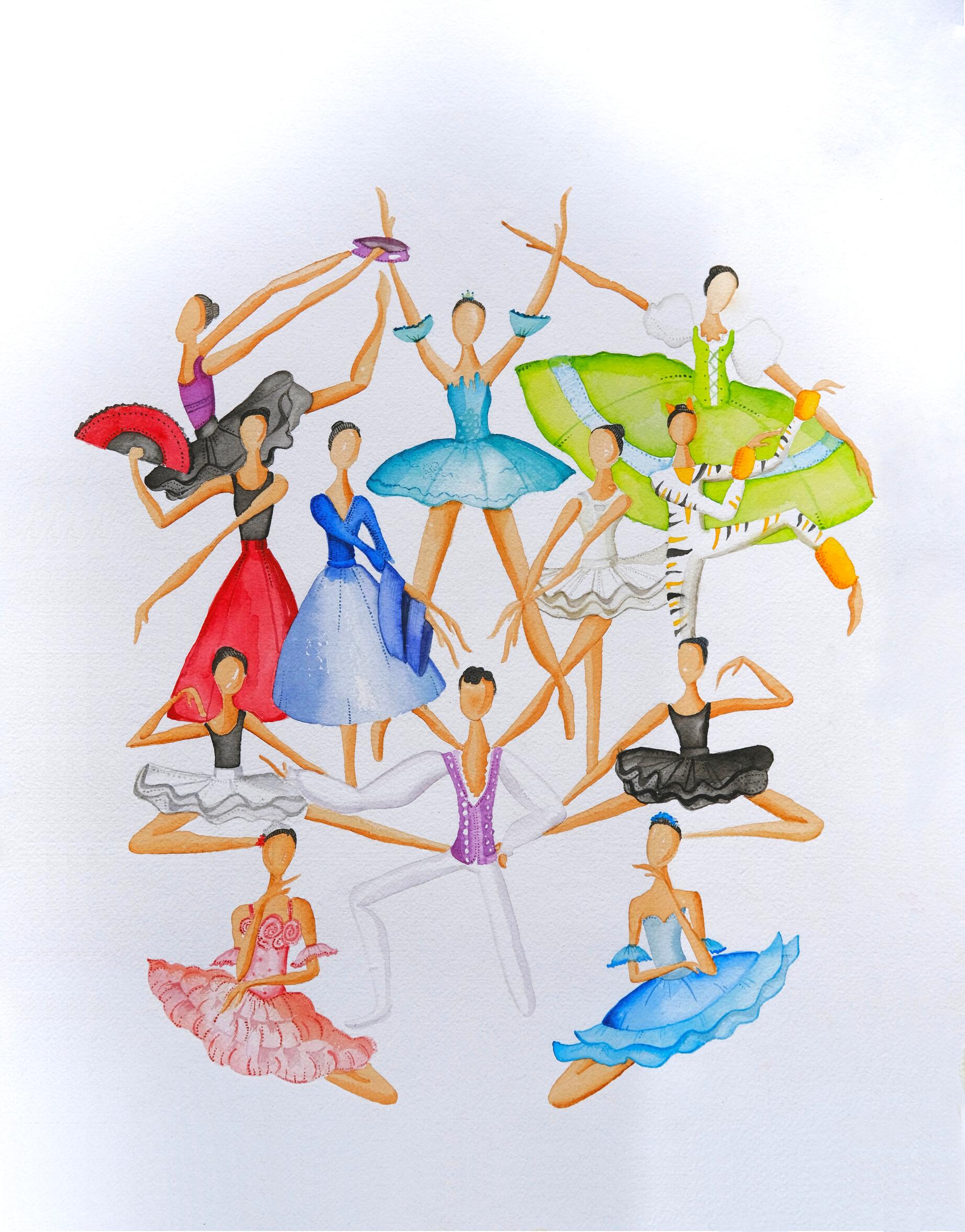


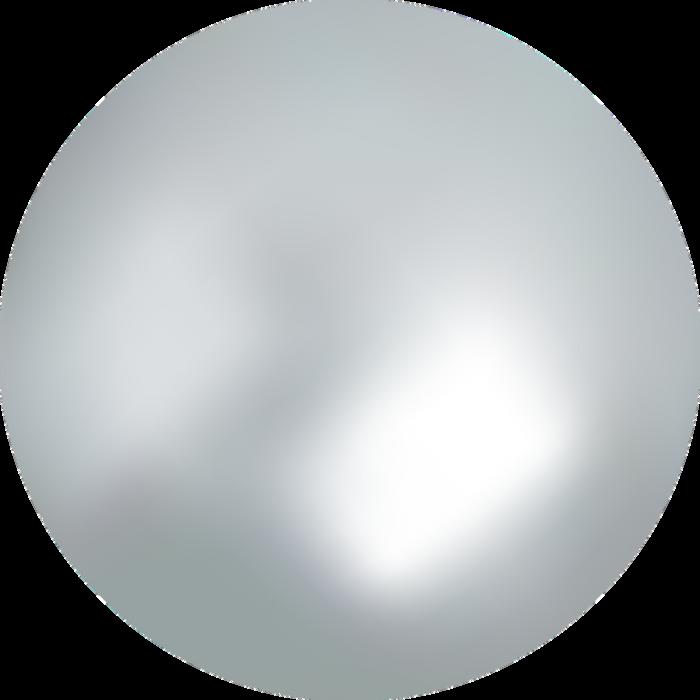



























































































































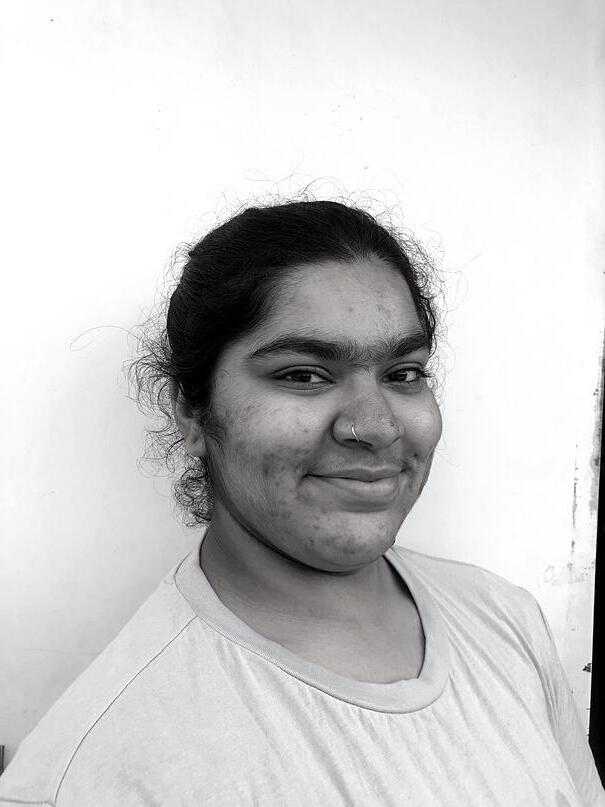
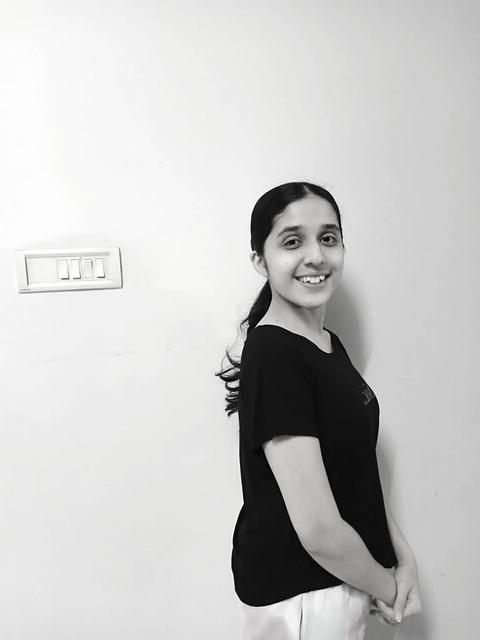

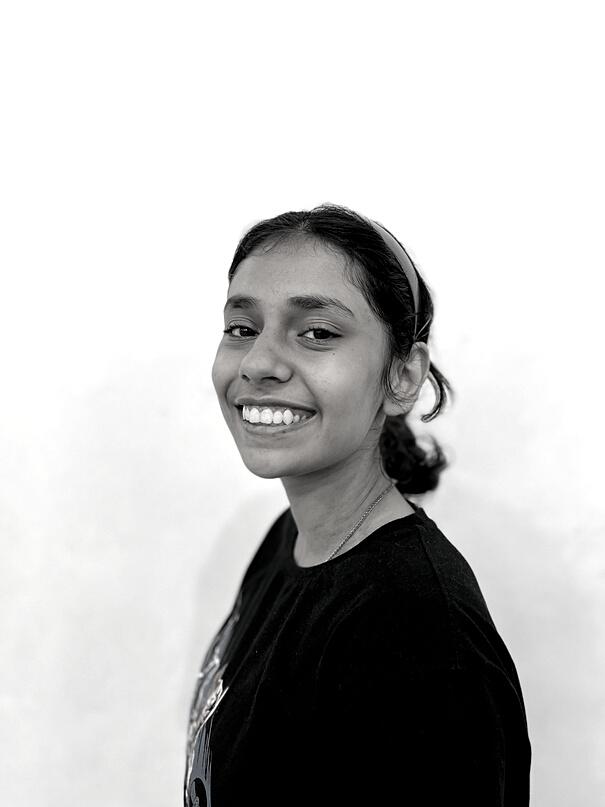
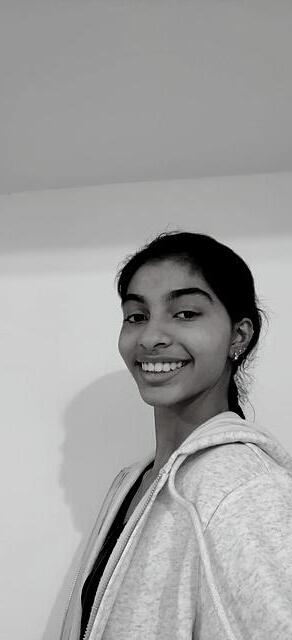


















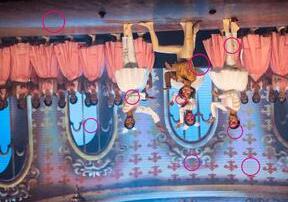





























 By Aashaya Anand
By Aashaya Anand



















